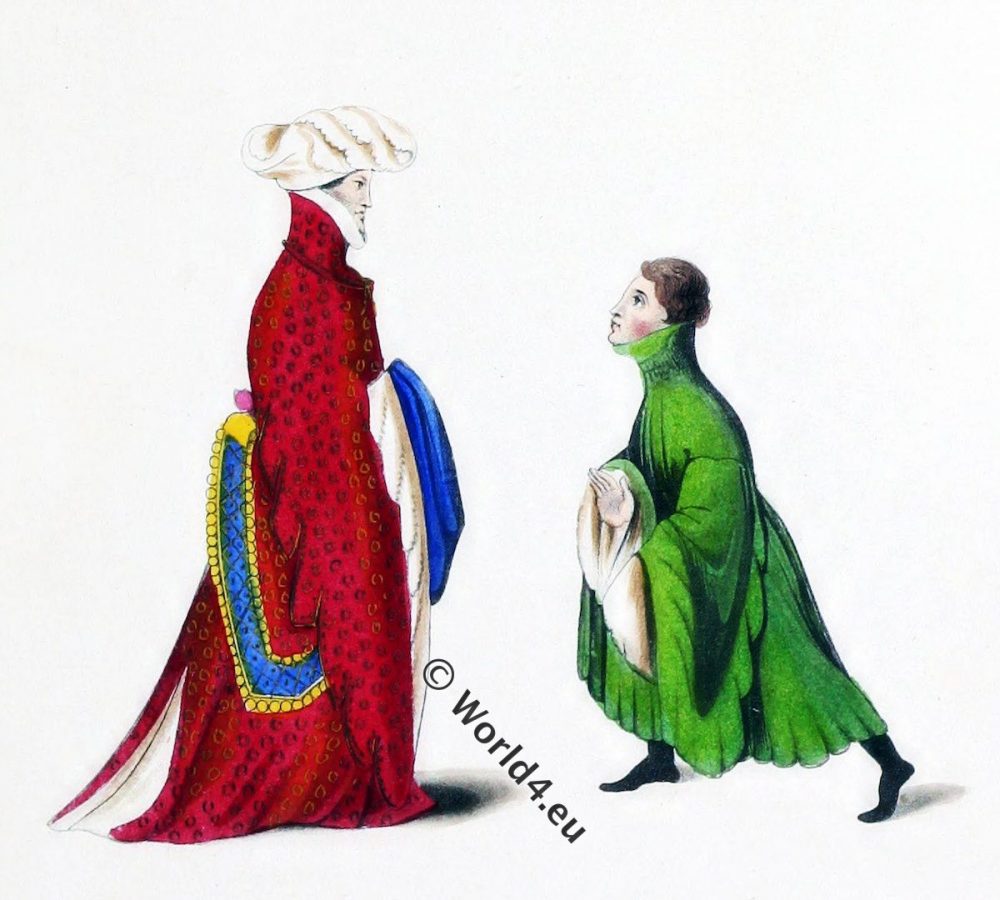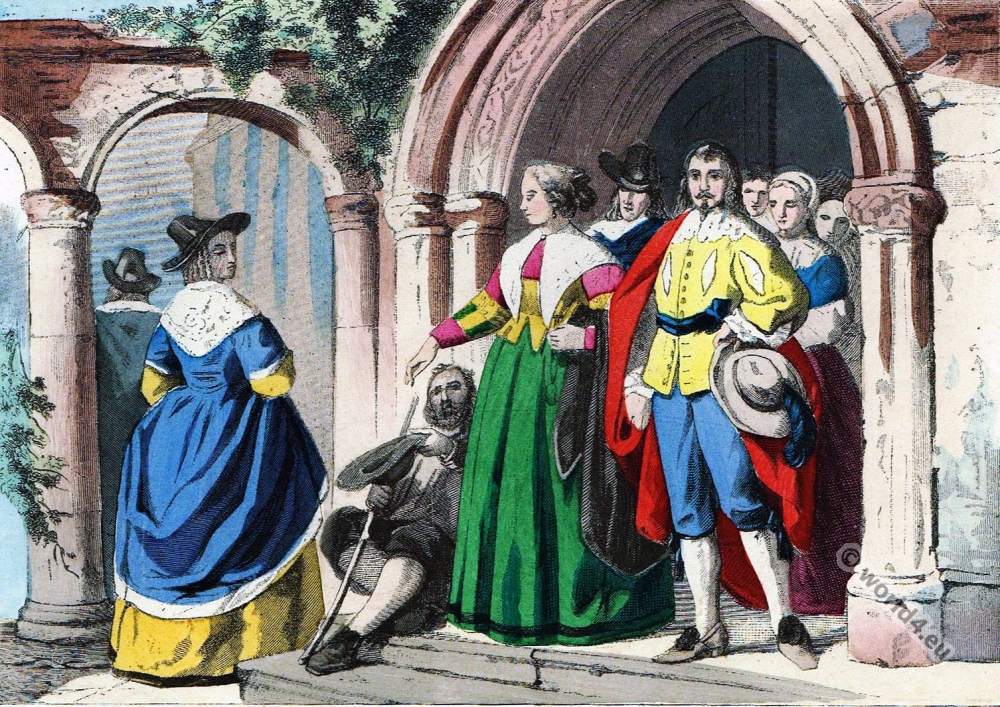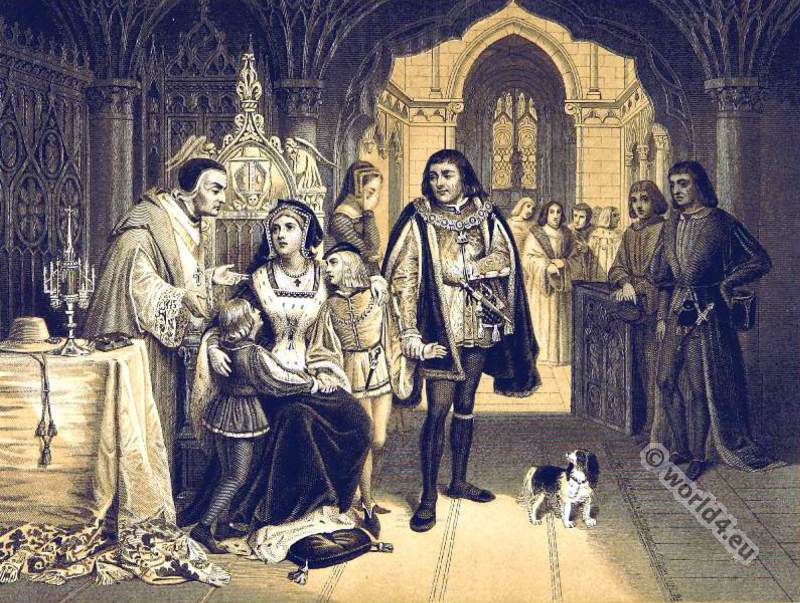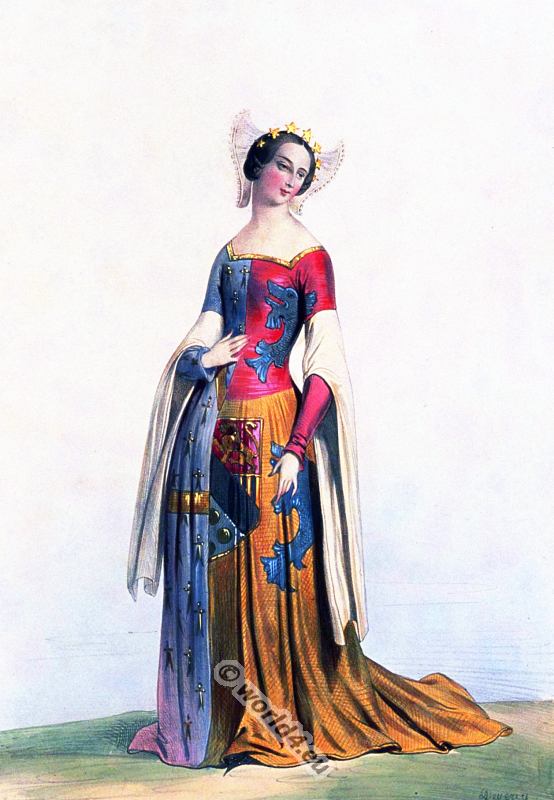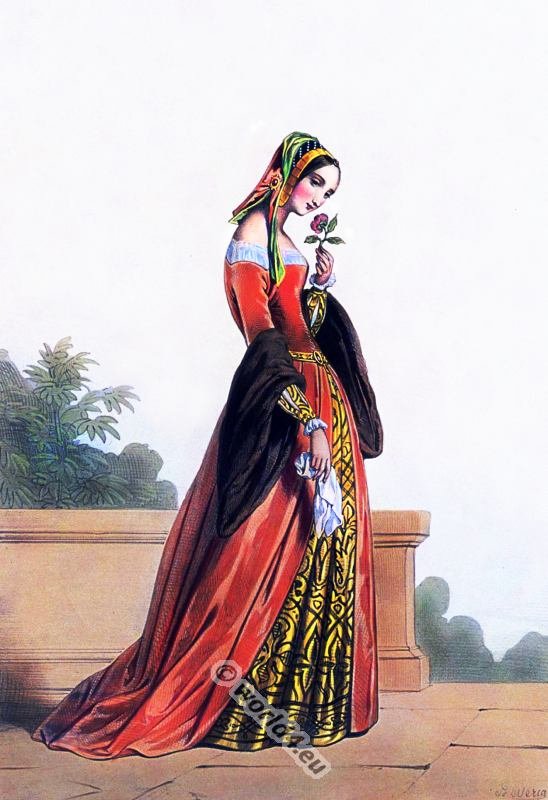COURTIERS OF THE TIME OF RICHARD II.
Anjou-Plantagenêt ruling dynasty
ABOVE all other periods in the history of England, that of the weak Richard II. was remarkable for the variety and gaiety of its fashions. The satirists and reformers of the day were zealous and loud in their outcries against the extravagance of the higher classes.
Chaucer, who wrote at this period, in declaiming against the “superfluitee of clothing” which prevailed around him, blames “the coste of the enbrouding, the disguising, endenting, or barring, ounding, paling, winding, or bending, and semblable wast of cloth in vanitee; but ther is also the costlewe furring in hir gounes, so moche pounsoning of chesel to maken holes, so moche dagging of sheres, with the superfluitee in length of the foresaide gounes, trailing in the dong and in the myre, on hors and eke a foot, as wel of man as of woman, that all thilke trailing is veraily (as in effect) wasted, consumed, thred-bare, and rotten with dong, rather than it is yeven to the poure, to gret damage of the foresayd poure folk, and that in sondry wise.”
The “gowns” alluded to in this passage of Chaucer, as worn both by men and by women, are exhibited in the figures given, in the accompanying plate, from two MSS. of the period (MS. Reg. 15 D. Ill, and MS. Harl. No. 1319).
The rich gown of the knight at the lower part of the plate, as well as that of the person who is making obeisance to him, will explain what Chaucer means by pounsoning and dagging. The edges of the sleeves, hoods, &c. were punched and dagged (or cut in shreds) into the form of leaves, &c, and sometimes gave the dress a very grotesque appearance. Among the nobility, the gown was often enriched with a profusion of jewellery. The man above has, apparently, a collar of small bells about his neck.
The two first figures, in the MS. from which they are taken, form the illustration of the Song of Solomon. The Harleian MS. (1319), is well known as containing an interesting contemporary narrative of the expedition to Ireland, and of the deposition of King Richard II., written in French verse, by a French gentleman, who accompanied a Gascon knight in the expedition, and was therefore present at most of the circumstances which he relates.
This poem, with a translation, and a long introduction, was printed in one of the volumes of the Archseologia. The figures here given are portraits of the Gascon knight and the author, neither of whose names are known; the latter is paying his respects to the knight, who had sent for him to accompany him to England.
We quote the passage mentioning this interview, both as a specimen of the poem, and because in the printed edition it is wrongly stopped, and therefore not quite accurately translated.
“Cinque jours devant le premier jour de May,
Que chascun doit laissier dueil et esmais,
Un chevaler, que de bon cuer amais,
moult doulcement
Me dit, ‘amy, je vous pri chierement,
Qu’en Albion vueilliez joyeusement
Avecques moy venir; prochainnement
y vueil aler.”
“Five days before the first day of May,” he says, “when every one ought to quit sorrow and trouble, a knight whom I love cordially, said to me with much gentleness, ‘Friend, I pray you affectionately, that you will come with me joyously into Albion; I intend to go thither shortly.”
The pavilion which encloses the foregoing page is taken from a MS. of the reign of Richard II., in the Cottonian collection, Nero, E. II.
Source: Dresses and Decorations of the Middle Ages by Henry Shaw F.S.A. London William Pickering 1843.
Related
Discover more from World4 Costume Culture History
Subscribe to get the latest posts sent to your email.


